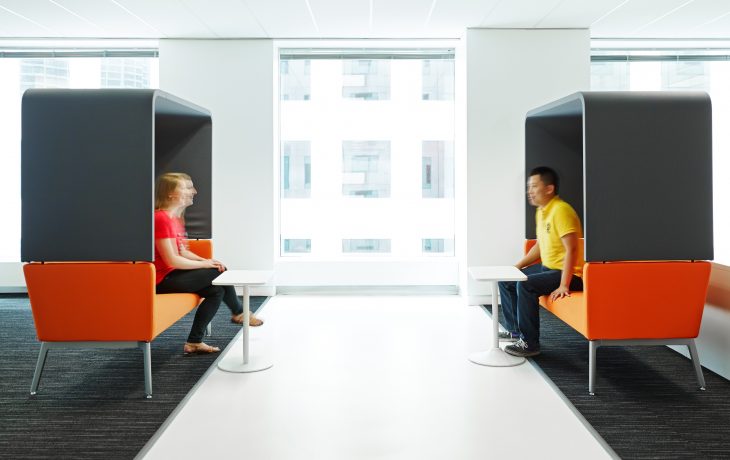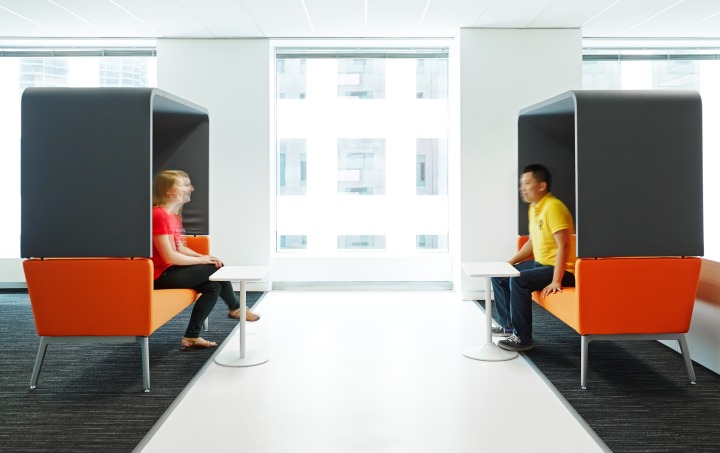
Workplace design is at a crossroads. Why? Because the historic reason we went to work at an office — to use the materials we needed to do our work — is no longer really applicable. Today, we can access most of the tools we need to work anywhere so as workplace designers, we are charged with understanding the new role of the workplace, in order to design differently for people at work. Another way of looking at it is by taking into account the human needs and behaviors that drive how we really work today — and ultimately, why we go to work at all, allowing us to redefine the purpose of today’s workplace.
If we look at the impact of the internet and mobile technology as “disrupting” the traditional workplace, adapting the design of the workplace to reflect these changes just makes sense. As famed workplace architect Frank Duffy puts it, “We must design workplaces that are appropriate to the emerging technology, economy, and work culture of the 21st century.”
If we think about the true purpose of going into the office, it’s much more about people connecting to other people.
The tension between moving to an “agile” work-from-home program versus the back-to-work policy that behemoths like Yahoo and Google adhere to is an example of the identity crisis currently being faced by organizations of all sizes. The debate actually strengthens the same argument — the fundamental role of the workplace needs to evolve to support how people and businesses operate today.
If we think about the true purpose of goiIng into the office, it’s much more about people connecting to other people — whether the work is collaborative or individual in nature. So how do we as designers design for this new reality?
At figure3, we think about a space program holistically. For example, we look at circulation space (the 45% of corridor spaces we know are needed to move people through an office) differently. More specifically, we see these spaces as an opportunity to create the spontaneous connections that are so important to vibrant, collaborative workplaces. As you’ll see pictured below at the Coca-Cola HQ in Toronto (featured in full here), the corridors were made into experiential branded portals, designed to “delight” employees (and visitors) through bold imagery depicting Coca-Cola’s brand, products and impact on people all over the world.
These portals also serve as decompression zones, separating the activity and buzz of the more public spaces from the quiet, focused work areas on each floor. The corridors at Coca-Cola Canada are an example of making “non-space” into positive, active spaces — turning highways into neighborhoods.

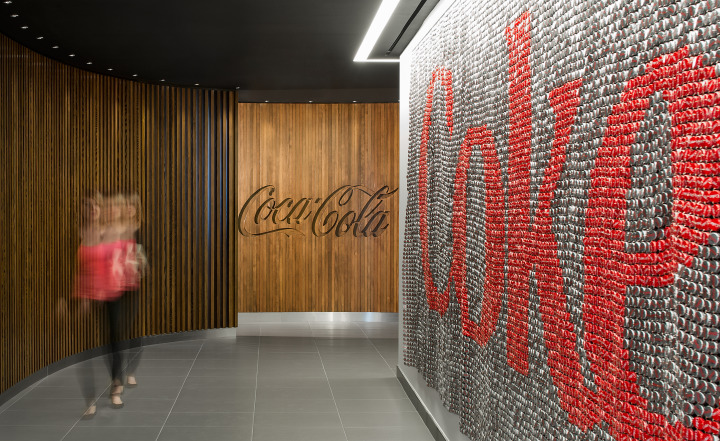
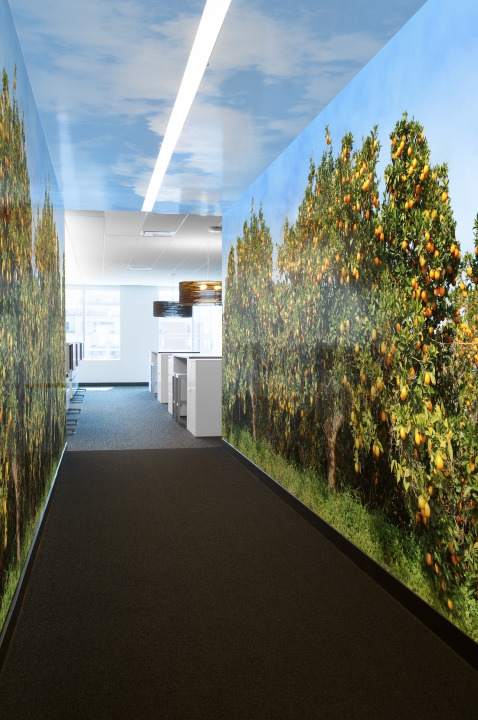
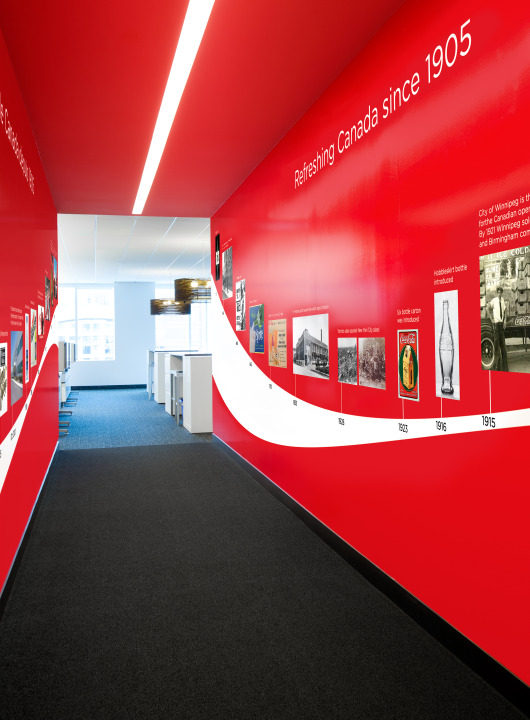
At the buzzing Toronto branch of global agency, IPG Mediabrands, corridors are just one example of the push to look at the workplace as a connective hub for employees from all departments and experience levels. At Mediabrands, capturing the kinetic energy of people and ideas led to an entirely open office with corridors that intentionally blur public and private space. The lounge pods pictured face one another to encourage impromptu conversations, people watching and the opportunity to drop in and hang out in a social space.
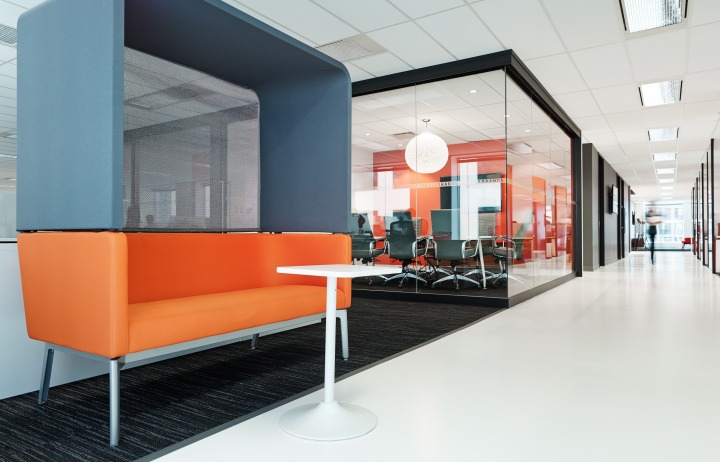
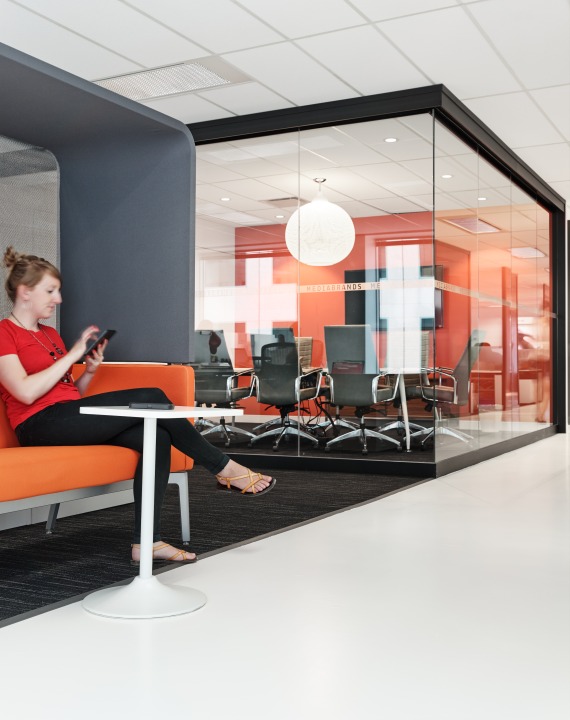
Reconfiguring the workplace to reflect changes to the way we work extends far beyond circulation factors and corridors. By rethinking overlooked space, we can start addressing the issues presented by an evolving way of working and interacting with one another. As designers, by pushing ourselves to better understand the role of the physical workplace in our increasingly virtual world, we can help connect people to each other, their work and ultimately back to the business.

